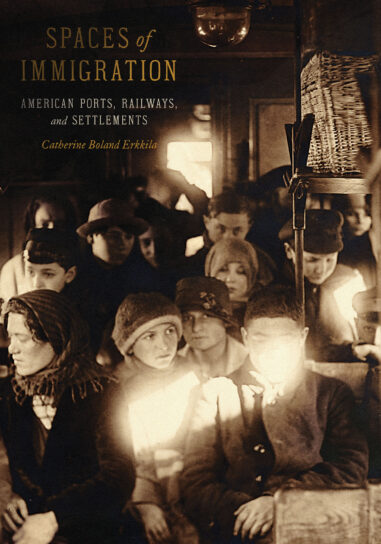
Hardcover $65.00
Request Exam or Desk Copy. Request Review Copy
Spaces of Immigration
American Ports, Railways, and Settlements
Spaces of Immigration is a groundbreaking and important scholarly contribution to American history, particularly the history of immigration, ethnic history, and business history, as well as architectural history, vernacular architecture studies, the history of interiors, and American studies. Although railways and railway stations have been studied extensively in the past, Spaces of Immigration employs a novel conceptual framework and knits together place, space, movement, and experience in a way that enriches all the disciplines involved.

